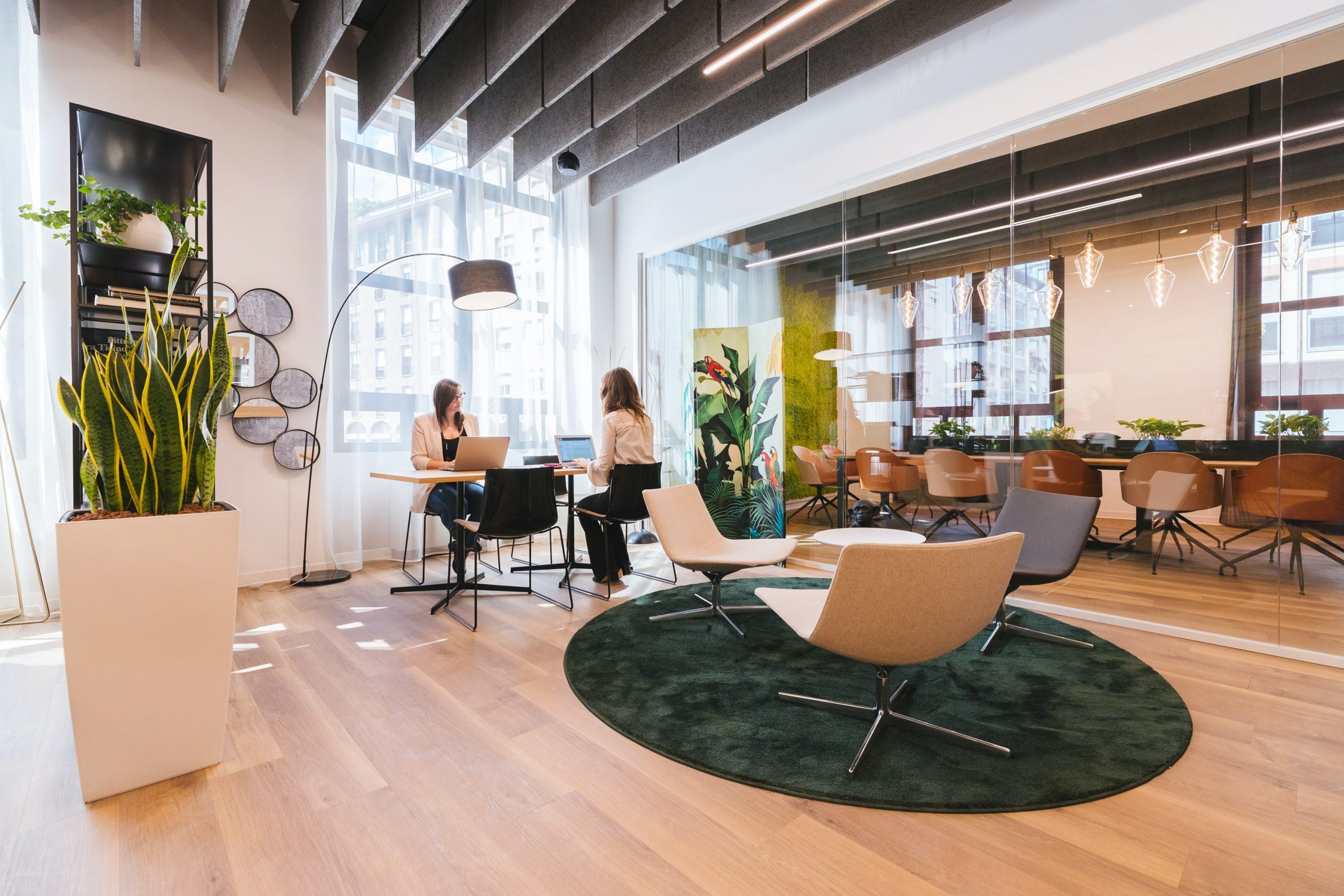Awareness of the need for mental wellbeing initiatives in the workplace has never been higher and for good reason. A recent CIPHR study revealed that the overwhelming majority (79%) of UK adults feel stressed at least one day per month, and the average adult admits to feeling stressed more than twice a week. These figures have no doubt been exacerbated by the global pandemic, but as we settle into the ‘new normal’, we’re facing a stress epidemic in the modern world of work. What’s causing this is certainly varied; excessive workloads, struggles with a permanent shift to remote working, changes at work and high levels of staff turnover are just a few examples of stress-inducing environments people are facing. Whatever the reason for these high levels of anxiety, employers are facing increasing calls to do more to support staff. While there’s a wealth of steps that can be taken, there’s one thing that often gets overlooked: the impact of the office on mental health.
Before we get into the various ways HR teams can alleviate stress in the workplace through the office itself, it’s important to add that employee needs will vary from firm to firm and person to person. For this reason, the first step should always be communication. Asking and consulting with your teams for their thoughts on what they need from the business and the workplace itself can provide a wealth of valuable insight and foster support for new ideas and changes.
So, what is the link between the office space itself and employee stress?
In a recent study of 3,000 office workers and 2,750 employers across Europe we found that 47% of employees felt that working from home had a positive impact on their mental wellbeing. However, as we move further away from pandemic regulations, employers are increasingly calling staff back to the office. But this return has been met by some reticence as the recent example of Apple’s calls for a mandatory return to the office demonstrated. In fact, our own study revealed that 64% of staff across Europe are reluctant to return to the workplace describing themselves as anxious, uneasy, nervous, or unhappy about making a return.
Clearly, the return to the office is causing some stress for staff and while there’s a myriad of reasons behind this, our study suggests that for many, the office space itself simply doesn’t work for them. Almost all (95%) employees we surveyed indicated that they weren’t happy with the office as it’s currently set up. While different workplaces will have varying needs, the majority of employees in our survey wanted their offices to be designed in ways that promote greater workplace community while also bolstering mental health, which means that there is a lot of room here for HR teams to help. But first, it’s important to understand what is causing workplace stress and how changing the office can alleviate this.
Improving the office: design, outdoor spaces and amenities
Employees have been out of the office for so long that they have formed new habits and for many, hybrid working has provided a new and better balance between work and home life. Yet, this doesn’t mean that the office is no longer a necessity. In fact, many of our respondents revealed that they missed the social elements of the workplace, suggesting that Teams and Zoom calls can only go so far in bringing peers together.
When we asked employees what they would change about the workplace, many cited a desire for separate areas for private conversations alongside dedicated spaces for collaboration. Others indicated a want for cafés, lounge areas and even bars. All of these are elements which the home office can’t provide staff and when we consider the level of isolation that people have faced over the course of the pandemic, it’s perhaps no surprise that so many want to socialise with colleagues again, for their own mental wellbeing, if not to drive innovation.
We also can’t overlook the value of outside areas for office workers. Research from the Mental Health Foundation gives us greater insight into the ways that people managed the stress of the Covid-19 pandemic, and spending time outdoors was a key tactic for many. Nearly half the UK population (45%) indicated that visiting green spaces, such as parks, helped them to cope with the stresses of the pandemic and a further 70% of UK adults agreed that being close to nature improved their mood.
For many businesses, the use of outdoor space hasn’t always been a consideration in office design, which is understandable given the fact that employers will want staff productively working at their desks. However, external environments are just as critical to boosting mental health and not only improve the overall wellbeing of the workforce, but ultimately boost workplace productivity. Outdoor areas don’t have to be large, even the smallest spaces can make a big difference in alleviating workplace stress.
Incorporating greenery into a small terrace is a simple but effective idea that will encourage people to go outside for a five-minute break or socialise during their lunch break. For those across the workforce who live in flats, having an uplifting outdoor area in the office gives them access to something their home doesn’t, which will again work towards alleviating stress and help those reluctant returners feel positive about heading back to the office.
Other benefits of working in an office:
- Learning and development opportunities across disciplines and generations
- Cross-team collaboration
- Seamless communication and understanding of organisational goals
- Clear, quick and concise decision making
- Fun!
Beyond the design: what’s in it for staff?
While having a workplace that is designed to give staff more than they can get from home will help boost both employee wellbeing and in-office attendance, it’s also important to consider what office ‘perks’ are being utilised to bolster mental health. When we asked employees what would entice them back to the workplace, adding extra amenities was ranked third across Europe. This included access to free food, snacks and drinks. And with the recent CIPHR study also showing that health concerns ranked in the top three things that people stress over, offering extras such as free healthy snacks will have a real impact on employee wellbeing in the workplace.
Unfortunately, the events of the last few years have meant that the majority of employees have faced a wealth of stresses and challenges, some of which have not gone away. It’s now up to HR teams to reflect the changes in the working world by collaborating with staff and external experts to create offices that not only support the workforce’s mental health, but also make them excited to be in the physical workplace again. While those we surveyed reported a general boost in their mental wellbeing when having the option to work in a hybrid way, isolation from peers on a longer term basis can be damaging. Interaction with others can bolster mental health both in and out of the workplace. For HR teams, now is the time to remind staff of the benefits of being together in person. The potential cost of inaction for those who do not move to meet the moment? Difficulties in attracting and retaining staff which will prove detrimental in today’s candidate-led labour market.







